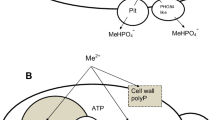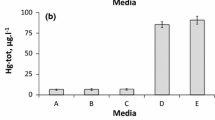Abstract
The mechanism of copper resistance in a multiple-metal-resistant natural isolate Pseudomonas putida strain S4 is based on inducible efflux. Active extrusion of copper ions occurs from the cytoplasm during the exponential phase of growth. Involvement of ATPase in the efflux of copper ions has been demonstrated by employing specific inhibitors. The effluxed copper is not thrown out of the cell, but remains in a bound form (to a protein) in the periplasm. Thus, a balance between the intracellular level, to fulfill the metabolic requirements, and the periplasmic sequestration, to evade toxicity, is maintained by this isolate.
Similar content being viewed by others
Author information
Authors and Affiliations
Additional information
Received: 11 February 2002 / Accepted: 7 March 2002
Rights and permissions
About this article
Cite this article
Saxena, D., Joshi, N. & Srivastava, S. Mechanism of Copper Resistance in a Copper Mine Isolate Pseudomonas putida Strain S4. Curr Microbiol 45, 0410–0414 (2002). https://doi.org/10.1007/s00284-002-3787-5
Issue Date:
DOI: https://doi.org/10.1007/s00284-002-3787-5




